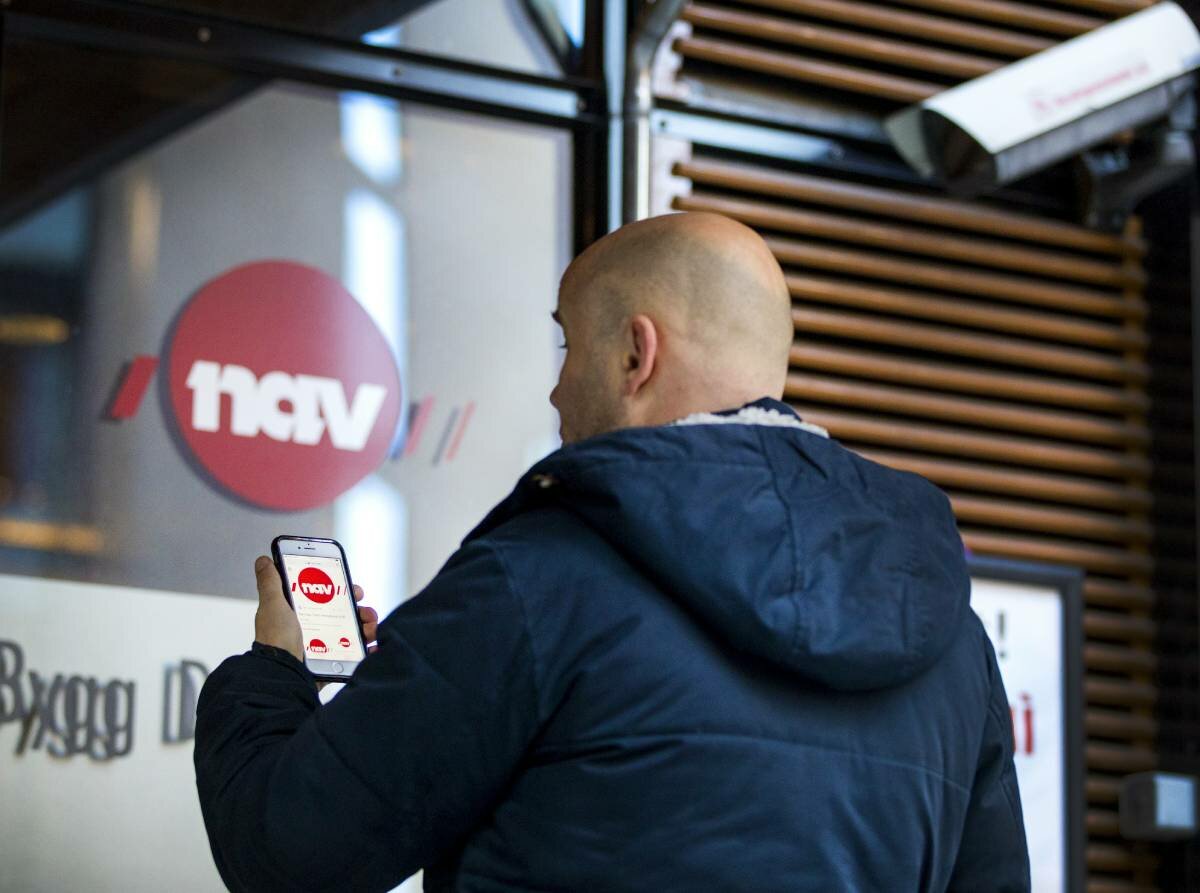The entire Dutch Government, including Prime Minister Mark Rutte, resigned, on Friday, over a social security scandal. Thousands of families, many with immigrant backgrounds, were wrongfully accused of welfare fraud and forced to pay back millions of euros. Though there are many striking similarities to the recent “NAV scandal” in Norway, the major difference revolves around the two countries’ political establishments’ acceptance (or lack) of responsibility.
Dutch media went into meltdown on Friday as the entire Dutch cabinet resigned due to the political fallout of a social security scandal.
It appears that families from ethnic minority backgrounds were deliberately targeted, by tax authorities, since at least 2013, simply because they had dual-nationalities.
They were branded as fraudsters due to minor details (for example, a missing signature on a form) and erroneously forced to pay back tens of thousands of euros, given by the government as childcare benefits, without any forms of appeal.
The Dutch PM, upon tendering his resignation to King Willem-Alexander, quoted by the BBC, said “Innocent people have been criminalized and their lives ruined.”
These families were left powerless at the mercy of tax officials, judges, and civil servants who all had a hand in this scandal.
This is not the first social security scandal to rock Europe in recent times.
Norway itself is still reeling from the effects of the “NAV Scandal.” However, unlike the Dutch scandal, there has been seemingly little political fallout in Norway.
Norway Today compares the two social security scandals, the various implications and repercussions to ask just where exactly is the political responsibility for the NAV scandal?
How is that that a similar scandal brought down a whole government in the Netherlands whilst major players in Norway emerged relatively unscathed?
Recent politics in the Netherlands
The Netherlands has been governed by Prime Minister Mark Rytte, leader of the People’s Party for Freedom and Democracy (Volkspartij voor Vrijheid en Democratie, VVD) since 2010.
A center-right party, it has governed either directly, through a parliamentary majority, or through various coalitions with parties across the political spectrum.
Rytte, a recent mainstay of Dutch politics, has overseen the VVD through four wins at general elections. When taking the oath of office in 2010, he became not only the first liberal Prime Minister in 92 years but also the second youngest in Dutch history.
However, his Third cabinet collapsed, and resigned en masse, on Friday after the entire opposition announced a motion of no confidence.
Like the sword of Damocles, this scandal has been hanging over the Rutte government for, at least, the past two years. It was brought to journalists attention that senior officials in the tax office had either stopped or tried to force repayment of childcare benefits from around 26,000 parents.
Furthermore, some 11,000 dual-nationality families (many with immigrant backgrounds) were deliberately targeted. These families had to pay back thousands of euros often causing financial and personal ruin.

Roots of the scandal: Previous welfare scandals, and responses
The roots of the Dutch welfare scandal stretch back to 2004. It was in this year that the Childcare Act (Wet kinderopvang) was passed which regulated the introduction of child care benefits.
Though the Ministry of Social Affairs was responsible for this law, the implementation (including payment and fraud prevention) fell under the auspices of the Tax and Customs Administration.
From 2009 to 2015, various high profile cases of welfare fraud occurred. Some of the more notorious included child care companies illegally receiving customers’ childcare benefits and Bulgarian criminal gangs abusing the allowance system.
These cases led to a ministerial committee, established by PM Rutte, to help combat future welfare fraud. The major recommendation was a tough stance, by the Tax and Customs administration, to be taken against any further welfare fraud.
Minor errors and ethnic minorities targeted
The adoption of this tough new stance was one of the key reasons for the Dutch security scandal (Toeslagenaffaire). Parents were quickly identified as being “welfare cheats” over ridiculously minor details, like a missing signature on the administrative paperwork.
They were then forced to pay back huge sums of money (often in the tens of thousands of euros) to the government without any means of reconsideration.
The personal and financial stress of these erroneous repayments had huge personal, financial, and psychological implications. Many families and personal relationships disintegrated under the intense probing of tax officials.
The most disturbing aspect of the scandal, however, involves Dutch dual citizens. In 2020, the Dutch Tax Office admitted that it had deliberately targeted some 11,000 people, for extra scrutiny, simply because they held dual citizenships.
Many of these people had an immigrant background and were first or second-generation Dutch. This revelation has, for many Dutch, reinforced a common notion about the institutionalized systematic racism of the establishment, and its apparatus, against ethnic minorities.
Dutch victims speak out
One such victim, Dulce Gonçalves Tavares, was interviewed by the BBC. Told to repay over EUR 125,000 in 2013, she spoke of the dire everyday consequences of this egregious decision.
She told the BBC: “You’re a single mother with three children aged eight to 11. You hit rock-bottom financially and think what now? My children and I sometimes had to go to bed without food..’
Another mother, speaking to Dutch news website NOS, said she tried to explain to authorities that mistakes had been made over summons to repay EUR 42,000. Officials then stopped the payment of all benefits resulting in financial ruin (as she could not afford to pay rent) and unemployment (due to the stigma of her being branded a “fraudster”).
These two women’s painful stories are among the many being reported now daily throughout Dutch and the world media.

The NAV scandal and the Dutch scandal: Common features
This is not the first time that a wealthy Northern European country has been rocked by a welfare scandal.
For those of us in Norway, the “Toeslagenaffaire” strikes eerily similarities to the “NAV Scandal” which has rocked Norwegian society of late.
On the surface, the similarities are striking. At the center of both scandals is the department responsible for the payment of welfare benefits: the Dutch Tax and Customs Administration and the Norwegian Labour and Welfare Administration.
Employers of both these departments were responsible for mistakes that led to innocent people being branded “welfare frauds” and then being erroneously forced to pay back vast sums of money.
The issue of these government departments targeting those “ethnically” or culturally different could also be seen as a common feature.
Whilst NAV targeted citizens from countries in the European Economic Area, the Dutch authorities targeted citizens, and residents, with dual nationalities and often ethnic minority backgrounds.
In both scandals, victims were erroneously forced to pay back huge sums of money. The average repayment, in the NAV scandal, was NOK 92,000 whilst Dutch victims repaid tens of thousands of euros.
These amounts often led to personal turmoil and financial ruin. The media of both countries were awash with stories of the human face, and personal toll, of these scandals.
In an era where the merits of liberal democracy are under unheralded levels of scrutiny (due to the rise of populist regimes and governments worldwide), the failings of two successful liberal democracies to only protect citizens against abuse are worrisome.
In both countries, politicians, lawyers, judges, and state officials used the law to wrongly target innocent people. Furthermore, the judicial system, spectacularly failed by either interpreting the law wrongly (in Norway) or by not allowing an appeal process (in The Netherlands)
However, not all was doom and gloom for democracy and the rule of law. Both countries saw the Ministers resign or be reshuffled. The entire Dutch government resigned as a direct result of this scandal whilst the head of the department, and minister responsible, in Norway, resigned too.
Both parliaments saw government inquiries established, and reports published, to make sure lessons are learned and the same mistakes never repeated again.
The NAV scandal versus the Dutch scandal: What was different?
Although both scandals have many common features there are some key differences between the two.
The most common difference between the two cases was the type of social security benefit paid out. In the Netherlands, it was child care benefits whilst the NAV scandal in Norway involved sickness benefit, attendance allowance, and work assessment benefit.
The victims in Norway spent some time out of the country (exercising their “freedom of movement” under EEA law) whilst Dutch victims did not.
Although the judicial system in Norway bears some responsibility for the NAV scandal, the fact remained that victims of the NAV scandal could, at least, appeal to a Social Security Court.
This was how Norway first learned of the scandal through a victim’s lawyer. No such right of appeal, or court, was afforded to the Dutch victims. What the tax officials decreed was unquestionably mandated.
When the scandal reached the media of the two countries, through both victim statements and government reports, the political fallout differed. The Rytte government, which as in power throughout the entire affair, resigned en masse.
The current Norwegian government, headed by Prime Minister Erna Solberg, did not resign even though it had been in power for the majority of the NAV scandal.
The Dutch opposition leader, who was the Social Affairs Minister under a previous Rytte cabinet, resigned on Thursday in response to the scandal. In Norway, the minister responsible for NAV was not fired but reshuffled whilst the head of NAV simply retired two months earlier than expected.
There is also a difference in terms of compensation for victims. Though money is being paid back to the Norwegian victims of the NAV scandal, the Dutch government has guaranteed a payment of, at least, 30,000 to all of the victims regardless of the money erroneously paid back.
Furthermore, the Netherlands saw some 26,000 branded as “welfare cheats” whilst the number was 3,000 in Norway.
Where is the political responsibility in Norway?
The NAV scandal has gripped Norwegian society since the first victim accounts were published in 2019. The Netherlands is now experiencing the first wave of victim accounts and experiences awash throughout the media.
These harrowing accounts of innocent people being crushed by the wheels of the state seem to have had more political impact in the Netherlands than in Norway.
The two scandals, roughly ran concurrently, from 2012 to 2019. How was it possible that only one government has accepted its role in the scandal?
On Friday, upon taking full and total governmental responsibility for the scandal, Dutch Prime Minister Rutte told Dutch media that “the buck stops here.”
He resigned with immediate effect but will stay on, in a caretaker capacity, until new elections are held later in the year. Though Norwegian Prime Minister Solberg sympathized with the victims, there was little political fallout such that key actors were either allowed to retire or given lateral promotions.
Perhaps the NAV scandal represents an opportunity for the Norwegian political class to look to the Netherlands for future guidance.
When such egregious wrongs are done to the very citizen it is supposed to protect, the government itself should, and indeed must, take full responsibility.
The ramifications of these scandals will no doubt haunt the reputation of both the Solberg and Rutte governments for years to come.
This is, however, cold comfort for the many victims who have had their lives, relationships reputations, and finances ruined by the very people whose job it is to protect and support them.
The opinions expressed are those of the author and are not held by Norway Today unless specifically stated.
Source: #Norway Today, #NorwayTodayNews
Do you have a news tip for Norway Today? We want to hear it. Get in touch at [email protected]






Be the first to comment on "A lack of social security: How the welfare state failed in both Norway and the Netherlands"